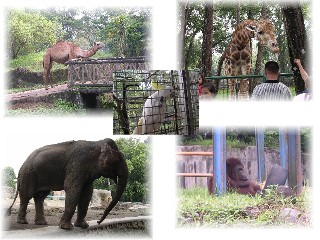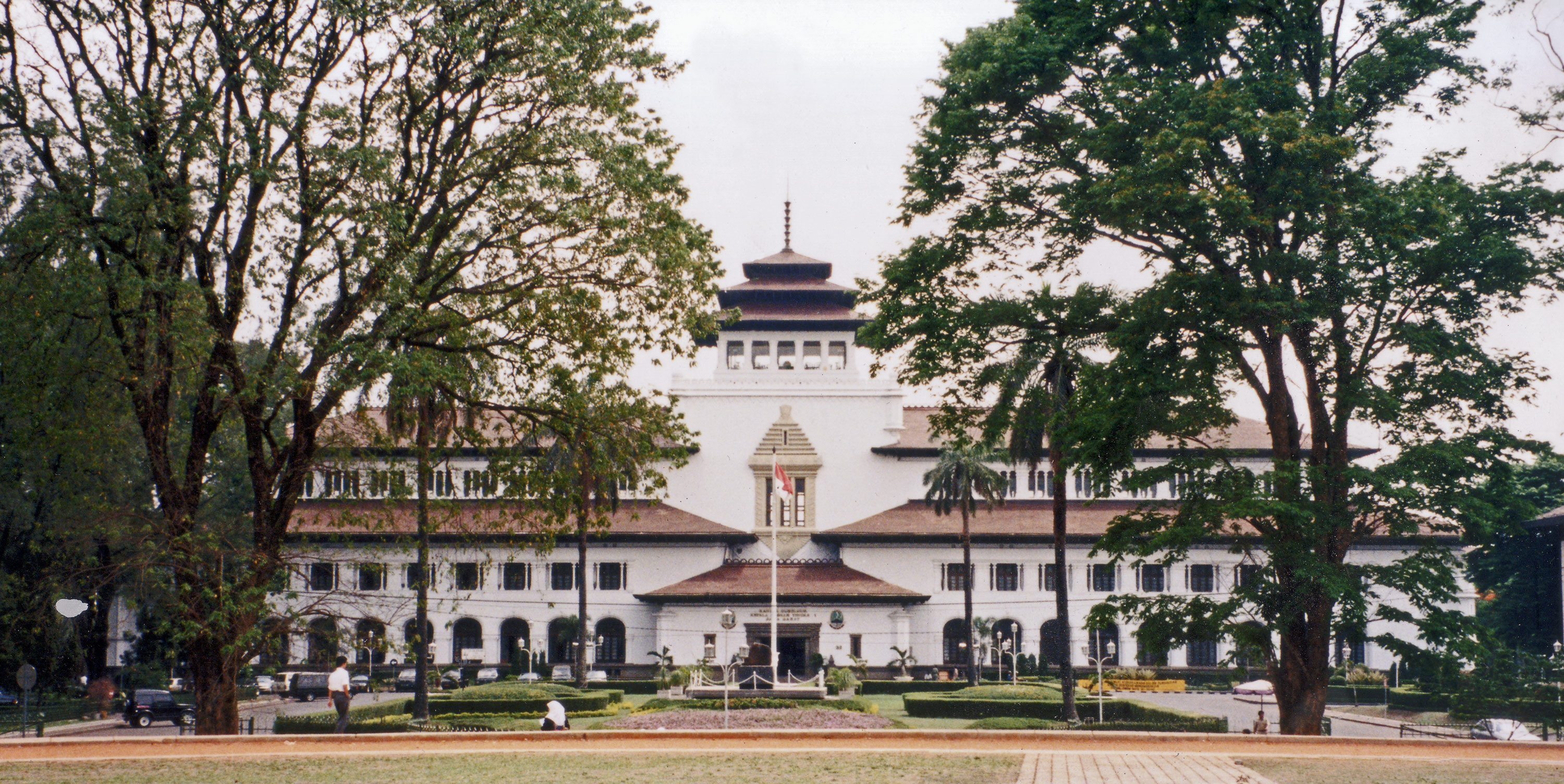Jakarta, the capital city of Indonesia, offers endless surprises. As one of the dynamic city in the world, it has many facets waiting to unfold: the history, the people, the culture and the nature. Its metropolitan outlook goes in harmony with the traditional and diversity resulted from its multicultural lives. These make the city more vibrant. Visitors will never really know Jakarta until they experience it personally.
With more than 10 million people living in Jakarta, the city is indeed the heart of business and entertainment in Indonesia. It always welcomes its visitors with hospitable services. A wide range of accommodation, from modest to luxurious, is available for the visitors to choose.
Visitor should explore the city and discover the unique and exciting experience offered by its abundant attractions. No matter how short their visit is, setting up a special tour to Jakartas museums, parks, cultural preservations, and traditional markets will make their stay memorable.

For shoppers, Jakarta grants each and every one of their shopping wishes. Modern shopping centers spread all over the city. While for delightful culinary voyage, Jakarta will gratify their appetite with an assortment of local and international cuisine. Food hunters should savor the exotic local flavor or even their hometowns specialties. To top it all, Jakartas night life offers great music, dancing, cocktails and party scenes that will make their stay an unforgettable experience.

For golf lovers it would not be difficult to find places of their passion. Many world-class golf courses have been developed in incomparable settings in and around Jakarta. The green grass, the trees, the calm lake and comfortable atmosphere would accompany their golfing experience in Jakarta.
Visitors, with their families, would find Jakarta a worthy destination to pamper the members of the family with fun. There are various attractive, joyful attractions and places to go. The choices are wide. They could create fun moment with magnificent history tour, natural trails tour, ethnic tour, arts, culture tour and also fun tour.
For the visitor seeking to discover the history of Jakarta or even the history of Indonesia, they could take a journey into the past through the citys most acclaimed museums and old buildings such as: Park of Memorial Stones (Museum Taman Prasasti), National Museum (Museum Nasional), Jakarta History Museum (Museum Fatahillah), Jakarta Fine Arts Museum (Balai Seni Rupa), the Maritime Museum (Museum Bahari), Sunda Kelapa Harbor (Pelabuhan Sunda Kelapa).


For the natural trail lovers, the Ragunan Zoo (Kebun Binatang Ragunan) is a must-see attraction. The zoo is a huge park hosting more than 3,000 animals. Its 135 hectare green and cool parkland is perfect for enjoying nature. There is also the Orchid Garden (Taman Anggrek) in Taman Mini Indonesia Indah complex. In this two hectares landscape, more than 150 types of blooming orchids are grown. Further to the south of Jakarta, nature lovers can roam the Fruit Garden (Taman Buah) in Mekarsari Cibubur, the Bogor Botanic Garden (Kebun Raya Bogor), the Cibodas Botanic Garden, the Puncak, the Pangrango National Park, the Halimun National Park, the Flowers Gardens (Taman Bunga) in Cipanas. While to the west of Jakarta, is the protected sanctuary enclave of the Badui Tribe " the only small Hindu tribe which strictly maintains their old way of living till date, the Krakatau Mountain, and the Ujung Kulon National Park.

For lovers of arts, culture and ethnicity, Jakarta has art venues, galleries, bookstores, flea market, ethnic communities and souvenirs. You should not miss the magnificent cultural performances at the Jakarta Cultural Center (Gedung Kesenian Jakarta), and also Ismail Marzuki Park (Taman Ismail Marzuki " the activities center of young Indonesian artists.

For fun lovers, the options are endless. The Ancol Dreamland Park (Taman Impian Jaya Ancol) is Jakartas largest recreational park. A day tour in this park might not be enough for a total pleasurable experience. In this park, the visitor could visit the Fantasy Land (Dunia Fantasi) " Indonesias version of Disneyland, animal show at the Oceanic Park, stroll around the big marine aquarium at the Sea World, have fun at the Water Park, enjoy art exhibition and talk with art communities at Art Galleries and others.

For children to learn with fun about the stars in the sky one can visit the Planetarium at Taman Ismail Marzuki complex.
Another must-see place in Jakarta is the Beautiful Indonesia Park (Taman Mini Indonesia Indah/TMII). TMII is an educational and recreational park. In this park, visitor can enjoy the traditional houses from all provinces of Indonesia; the Museum Indonesia which houses Indonesian contemporary arts, crafts and traditional customs; the orchid garden; the bird park; the biggest fresh water aquarium; many other museums including the Museum Purna Bhakti Pertiwi which houses all souvenirs received by the former Indonesian President Suharto from heads of states/governments from all over the world during his tenure as the president; the magnificent Keong Mas Imax Theater and many other attraction.
As a dynamic city, Jakarta keeps growing and developing, and with it comes newer attractions.
Beyond Jakarta
For those tourists seeking a holiday at a tranquil destination, there are lots of places beyond Jakarta.
North of Jakarta
Kepulauan Seribu (Thousands Islands). What many people may not know is that within the greater Jakarta area there is a much smaller archipelagic chain of paradise island called Kepulauan Seribu or Seribu (Thousands) Islands.
While the Seribu Island epithet sounds romantic, in realty there are actually closer to three hundred islands in the chain. In terms of natural beauty and exclusivity these are some of the finest islands in the region, offering all the classic elements of balmy tropical holiday, white sandy beaches, and all the marine and aquatic diversions to keep you as active, or inactive, as you like. Its only natural that due to their close proximity to Jakarta, these islands have become a prime weekend playground for the city dwellers. Access to these islands is easy.
West of Jakarta
After an hours drive, or 80 km away, one can see the enchanting panorama of Banten. An ancient trading port, Banten is noted for its historic buildings. Great Banten Mosque, for instance, was built by Sultan Maulana Yusuf in 1559. The Palace of Sorosowana is located adjacent to the mosque.
Going further westward you will reach Anyer and Caritas beaches which has cottages, apartments, condominiums and five-star hotels. Anyer and Carita offer sandy beaches and colorful coral reefs. At Karangbolong Beach, still within the area of Anyer, there is a magnificent coral reef with a big hole in its center. It was formed when the Karakatau Mountain exploded in 1883. There are several shady areas along the Karangbolong beach where one can relax and enjoy the view. Karakatau Mountain and its offspring mountain locally named Gunung Anak Karakatau are among the recommended places to visit. Typical activities on the island are trekking and snorkeling, diving and fishing in its clear waters.
From Carita, visitors can continue southward to the national park of Ujung Kulon, which was declared by UNESCO as a Natural World Heritage Site in 1993. Covering 120,551 hectares, the park is home of the one-horned rhino (Rhinoceros Sondaicus), an extremely rare animal of which only 60 survive in their natural habitat. Package tours are available from Jakarta, Carita and Labuan. Offering eco-tourism experience, Ujung Kulon is synonymous with white sand and beautiful scenery.
South of Jakarta
By taking a short trip from the blare and traffic of Jakarta, tourist can find a retreat offering fresh climate, green scenery and accommodations. At 1,450 meters high, Puncak (the Peak) is a choice place to visit from Jakarta. With invigorating temperature of 20-22 degrees Celsius, the area offers attractions such as leisurely walks along tracks that snake on mountain slopes covered with tea plantations.
Another interesting place is Telaga Warna (Colored Lake) in Gunung Mas tea estate. Its water surface changes color due to refraction of light. Going further east, one reaches the village of Cisarua, with small waterfalls, scenic picnic spots, eateries and trails.
Nearby is the Taman Safari Indonesia which is home for more than 2,300 animals of 230 species from almost the entire world. In the park, herbivorous animals such as deer, giraffe and zebra as well as carnivores such as tiger, lion etc. roam freely and visitors must stay in their vehicles during a tour of the area.
East of Jakarta
Bandung is easily reached from Jakarta by train, road or air. Trains are preferable means of land transportation for visitors who dont want to miss out witnessing breathtaking sceneries along the trip. Known in colonials time as the Paris van Java, Bandung is studded with shops offering variety of accessories. In a city encircled by mountainous area, you can do many leisure activities. For those with interest in historical street " such as Braga, Taman Sari, Banceuy, Lembong and Asia Africa " the city offers 100 historical edifices, each with Dutch architecture.
Other must-see attractions include Dago Tea House, Geological Museum and Art Deco, which offers a sweeping view of the city, the surrounding valley and mountains. Another attraction well worth a visit is Tangkuban Perahu, Indonesias, if not the worlds, only drive-up volcano. Lembang is another place to visit if you would like to see, enjoy feel fresh air and scent of fresh various vegetables from its farming.
Away from Jakarta
In terms of tourism, Indonesia is the most varied destination anywhere. Out of Jakarta and its surroundings, visitor may continue their visit to many other attractive and favorite tourism destinations such Yogyakarta and Solo or Surakarta " Yogyakartas neighboring city " which is well-established as the center for Javanese arts and culture. Surabaya, capital of East Java, is the departure point to visit the magnificent Mount Bromo volcano, a spectacular site at dawn. Lampung, located on the southernmost tip of Sumatra, where the area abounds with national parklands, sandy coastline and offshore islands.
North Sumatra, showcases the refreshing Lake Toba, one of the largest and deepest inland bodies of water in Asia. West Sumatra is endowed with dramatic seascapes, canyons, lakes and abundant forest and is home to the proud Minangkabau people. Bali, recognized as one of the worlds most alluring.






























